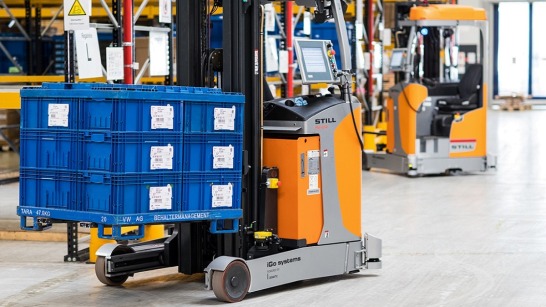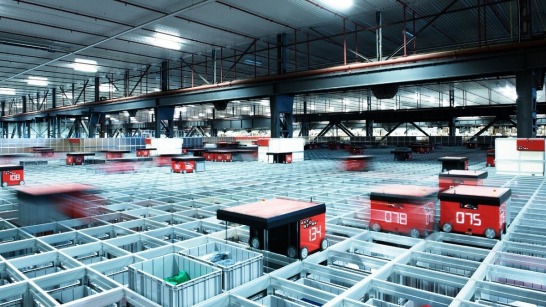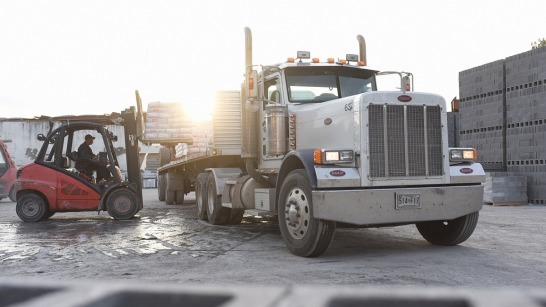It announces itself with a beep, quiet to begin with, then becoming louder and louder. Finally, the STILL FM-X reach truck appears around a corner at Audi’s logistics center in Ingolstadt in Bavaria. As if steered by an invisible hand, the orange high-tech machine made in Hamburg slowly approaches a blue crate. The truck stops a few centimeters in front of it with its fork off the ground. It almost seems like the reach truck is taking a deep breath before lifting the crate, but in fact the truck’s sensors are scanning the crate and sizing it up. After a brief pause, it determines that this is the correct crate. The FM-X drops its fork to the floor, picks up the crate and places it in the correct space in the rack.
“Our job is to transport automotive parts on time and in the right quality around the world, in particular from Europe to China, Mexico, and Brazil,” explains Adam Molnar, head of international logistics at Audi. This includes a complex process from goods inward and warehousing to packing stations and shipping. “Increasing automation and the growing use of digital technologies present many opportunities and potential to make the logistics process more efficient and more stable. We wanted to assess this in the real world,” says Stefan Meier, logistics planner at Audi and project manager for automated reach trucks. The CKD logistics facility in Ingolstadt was chosen as the site to put this to the test. “Not only is the site our CKD center of excellence, but it’s also Audi’s only CKD site that is operated entirely by Audi employees,” Meier explains. CKD stands for ‘completely knocked down’, a production method where vehicles are exported in parts and assembled and sold in the destination country – mainly to avoid high import duties on finished products.







